Richard III's final path to rest 10 years on
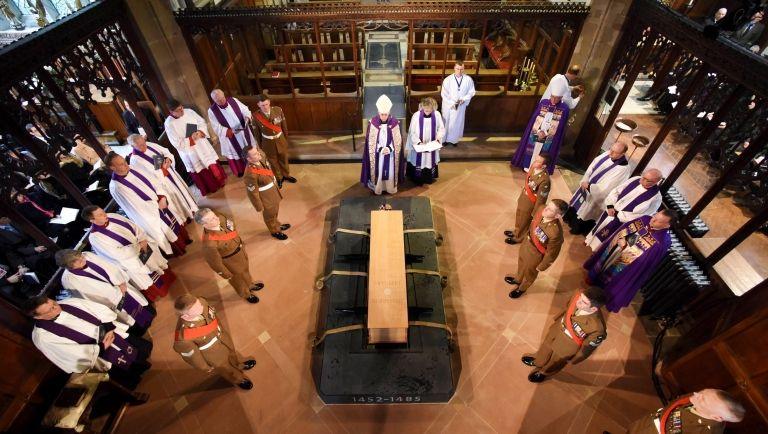
Richard III was reinterred in a specially-designed tomb after being driven through the city
- Published
The discovery of Richard III's skeleton beneath a council car park in Leicester in 2012 stunned both the academic and wider world.
But while the identification was confirmed in January 2013, his reinterment at Leicester Cathedral did not take place until March 2015.
As well as disputes and disagreements, the time was taken up planning a suitable ceremony for a medieval king - something not done for more than 500 years.
Some of those involved, along with expert onlookers, reflect on the past, present and future of the car park king.
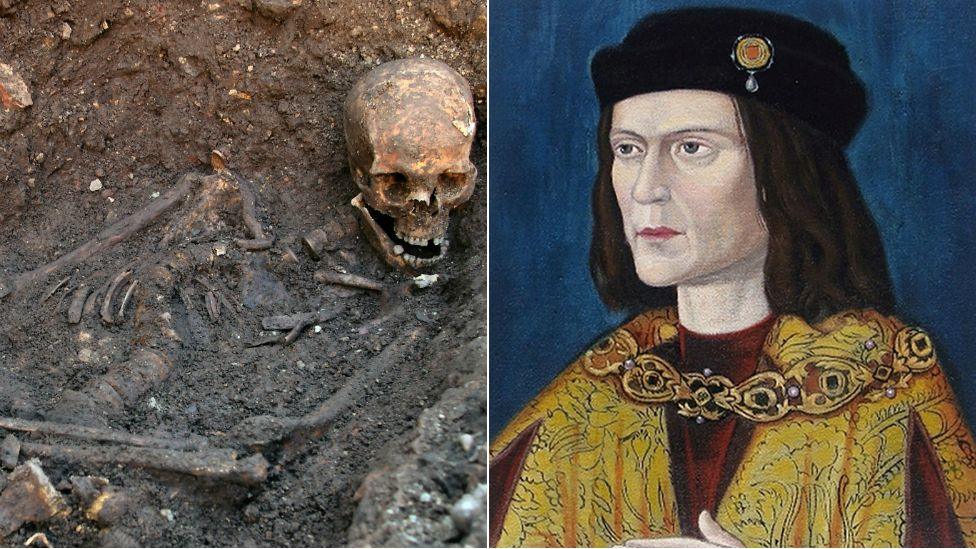
Richard's notoriety combined with the surprise of his discovery made for global headlines
The initial dig, initiated by the Richard III Society, was carried out in partnership with the University of Leicester and supported by Leicester City Council.
After being lost for so many years, it was something of an irony that the bones of what would eventually prove to be Richard were found in the first hours of the excavation.
A large part of the reason they could be identified as the king was some surviving descendants had been identified and their DNA could be compared to the skeleton.
Genetics expert Prof Turi King, who led this part of the project from the university, said: "The beauty of the project was that the whole was bigger than the sum of its parts - no one person could have done it on their own.
"So it was this lovely project with loads of people - academics and non-academics - coming together to make it the success it was.
"I was just one small part of the project."
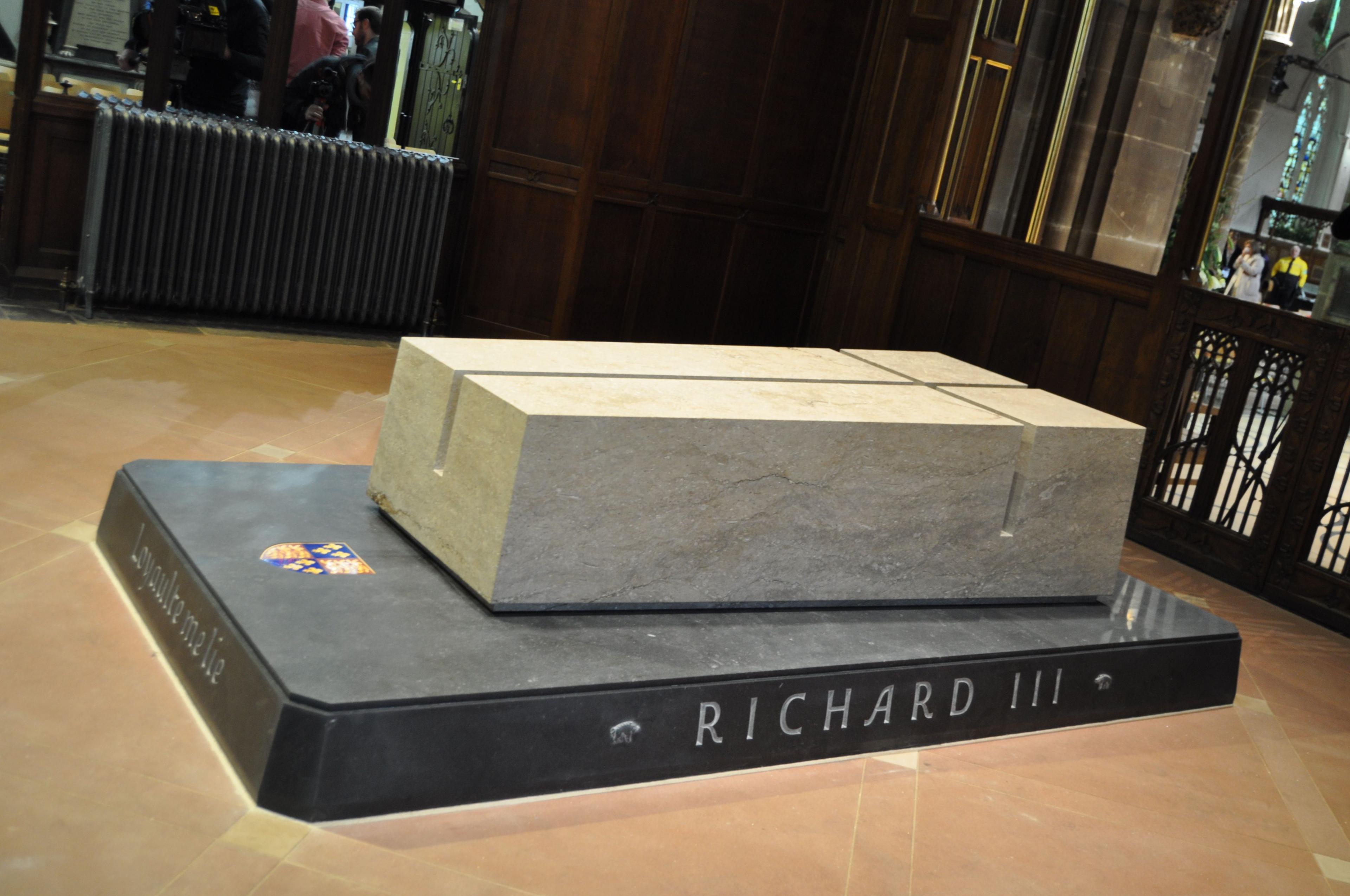
Controversies swirled around the project, including the modern design of the tomb
But the number of contributors, along with the global profile of the find, meant disagreements surfaced.
There were arguments about ownership of the bones, about how they were being treated, the design of his tomb and most of all, where he should be buried.
A legal challenge aiming to have the remains handed over to York - with which Richard had strong links - took nearly a year to resolve and was only decided by the High Court in May 2014.
Howard Williams, professor of archaeology at the University of Chester, also writes the Archaeodeath blog, examining attitudes to excavated human remains.
He said: "Ten years on, it still makes my head whirl.
"On the one hand this was a very up-to-date, state-of-the-art project which showed how archaeology can tell stories from hundreds of years ago, which was very positive.
"But it also brought to the fore many deep-seated, old-fashioned, almost 19th Century, romantic, almost nationalist sentiments and local identity pride that was very much the mark of the birth of archaeology in the 19th Century.
"This was when early archaeologists and antiquarians were digging up the dead to promote their own local patch.
"So it was a bittersweet moment because it was great to have such a high-profile project, but there were elements of it which felt like a Victorian bunfight over who owned the bones."
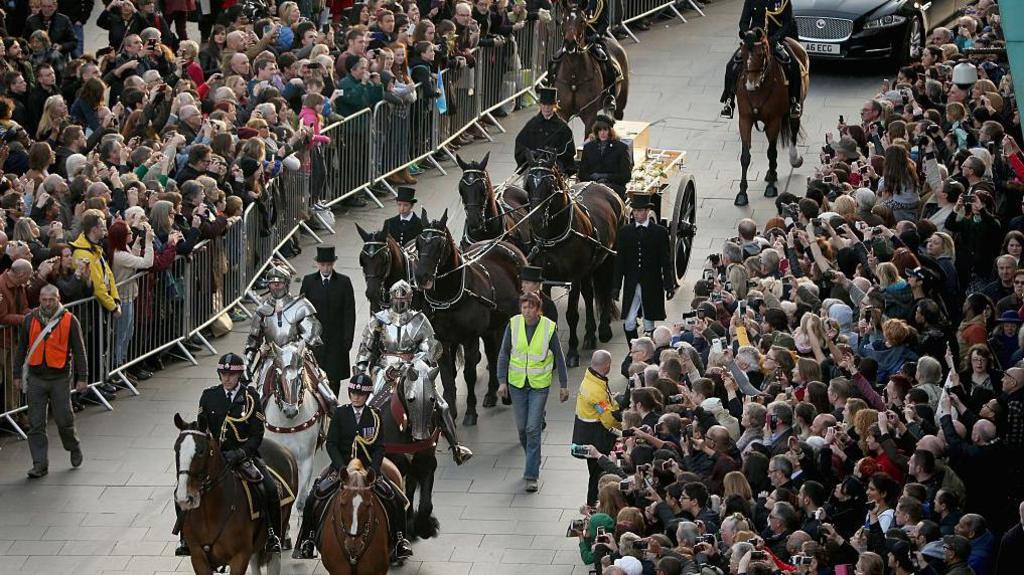
Richard's funeral cortege, which combined traditional and modern elements, brought Leicester to a standstill
Once the issue of where he should be laid to rest was resolved, it then became question of how.
The bones, placed in a plain coffin, were handed over by the University of Leicester to the Diocese of Leicester and then taken on a procession past the site of his death at Bosworth, before returning to the city.
Prof Williams said: "I've shown it to my students. It was so rare for an archaeological project to lead to such a public ritual.
"It had knights on horseback and a whole liturgy constructed for the occasion, mashing together medieval Catholic and modern aesthetics.
"The tomb itself is designed to be a modern form while being fully embedded in the medieval history of Leicester.
"It said a lot about our nation's connection to the past - perhaps an early indication of a view of Englishness which is a growing part of political and cultural conversation."
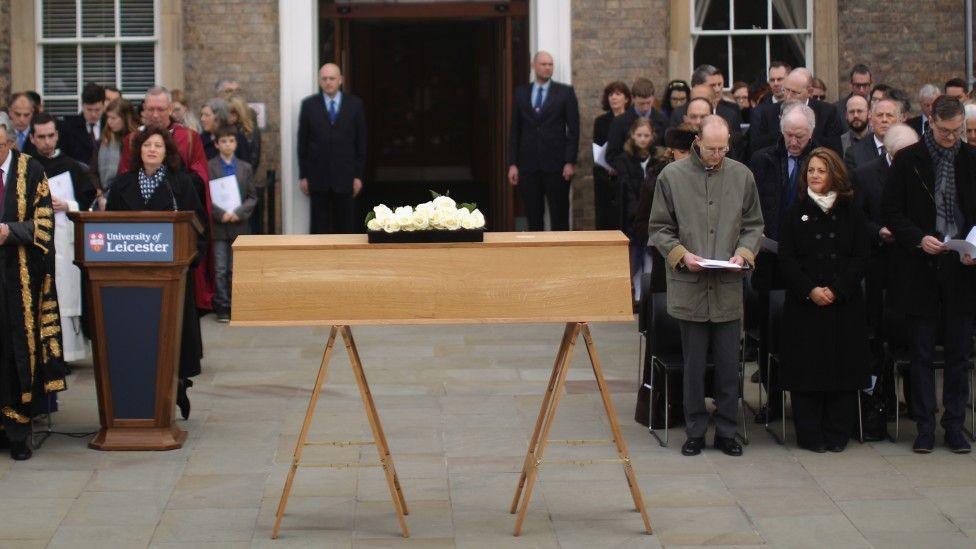
Prof Turi King, who led the DNA identification, read a poem as his bones were handed over to the church
Prof King said: "The reinterment was amazing, the city was just alive with people coming and wanting to be involved.
"It felt quite electric down town. During the reinterment I read a poem when Richard was leaving the university.
"What I really remember was the extreme interest but also it was nice to finally lay Richard to rest again.
"We had him in our care for the previous two years so it felt like we were doing right by him."
The streets of Leicester were lined by crowds who watched the cortege pass by, some throwing the white roses associated with his family.
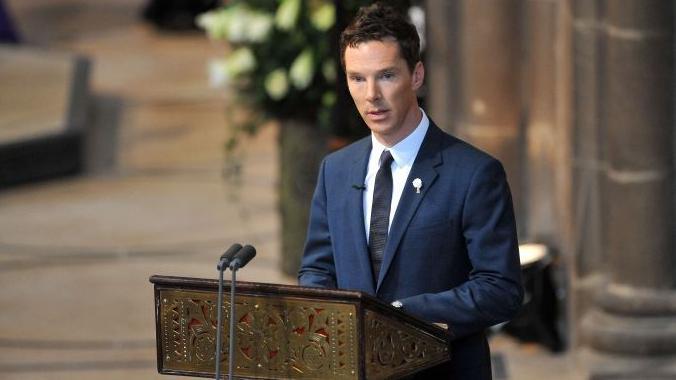
The reinterment was attended by several dignitaries, including actor Benedict Cumberbatch
The ceremony itself was presided over by the then Archbishop of Canterbury, Justin Welby.
Guests included Sophie, Countess of Wessex and the Duke and Duchess of Gloucester.
Actor Benedict Cumberbatch, a distant relation of the king, read a poem by Poet Laureate Carol Ann Duffy.
The Revd Canon Emma Davies said: "It has just changed the city. You think back 10 years and who knew about Leicester really?
"And then we had this amazing story about finding this lost king in a car park and everyone coming together to give him such a dignified and honour-filled funeral, it was just wonderful.
"Since then people just know where Leicester is."
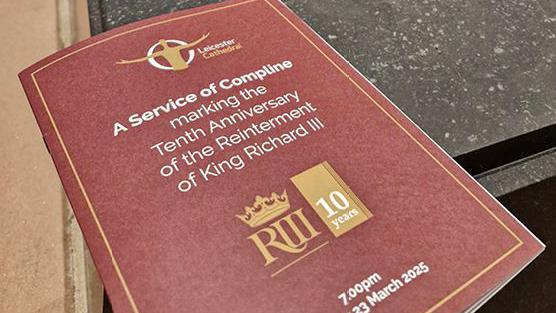
The cathedral is holding a series of events to mark the anniversary
The cathedral saw annual visitor numbers jump from 35,000 before the find to about 100,000 now, prompting a substantial remodelling of the interior and an entirely new learning centre being built.
The diocese is marking the anniversary with a series of events including a musical concert, special services, talks and even a medieval banquet.
Revd Canon Davies said: "It is really important to honour Richard, so that is part of the service and as part of that, some roses will be laid at his tomb.
"But also this is about us. It's about us as Leicester, it's about the civic leaders of the city and county and lots of people who were involved in the reinterment 10 years ago.
"It's about marking what it means to us and a time to reflect back and look forward.
"If you wrote this down as a story, people would think it was too far-fetched, the whole thing is incredible.
"We still have loads of people coming to marvel at that fact and stand next to the tomb."
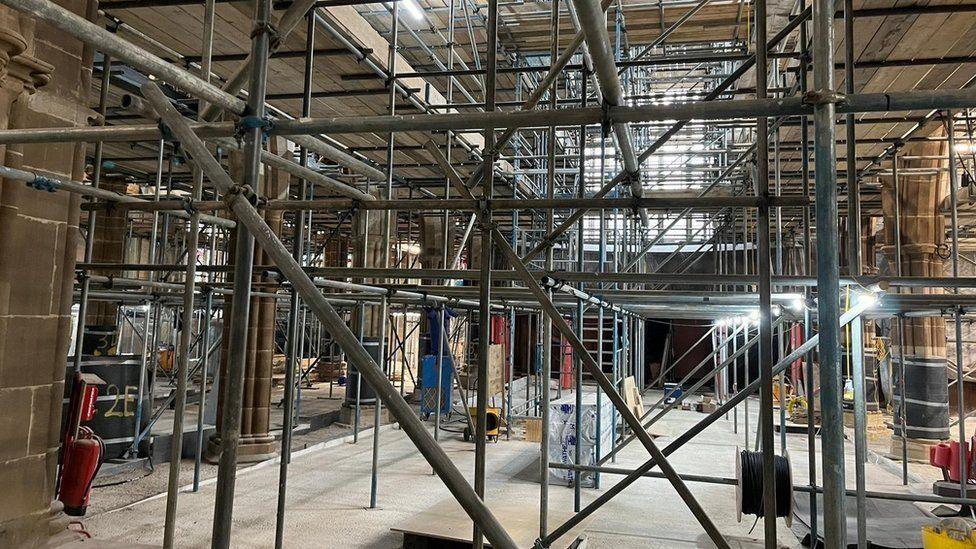
The "Richard III effect" has seen the cathedral, and parts of Leicester, remodelled to reflect his story
Mathew Morris, who was in the trench when Richard was uncovered, still works for the University of Leicester's archaeology service.
He said: "I think we have come up with a better way of telling the story [of Leicester] and that is the Richard III effect.
"The attention on Leicester and the creation of a new heritage centre, all the amazing heritage panels which are sited around the city now.
"That has all come out of the interest in Leicester's past that started with the Richard III discovery.
"And you don't often get to see a king being buried - that was a moment of history being made and that has carried on."
Get in touch
Tell us which stories we should cover in Leicester
Follow BBC Leicester on Facebook, external, on X, external, or on Instagram, external. Send your story ideas to eastmidsnews@bbc.co.uk, external or via WhatsApp, external on 0808 100 2210.
Related topics
- Published28 July 2024
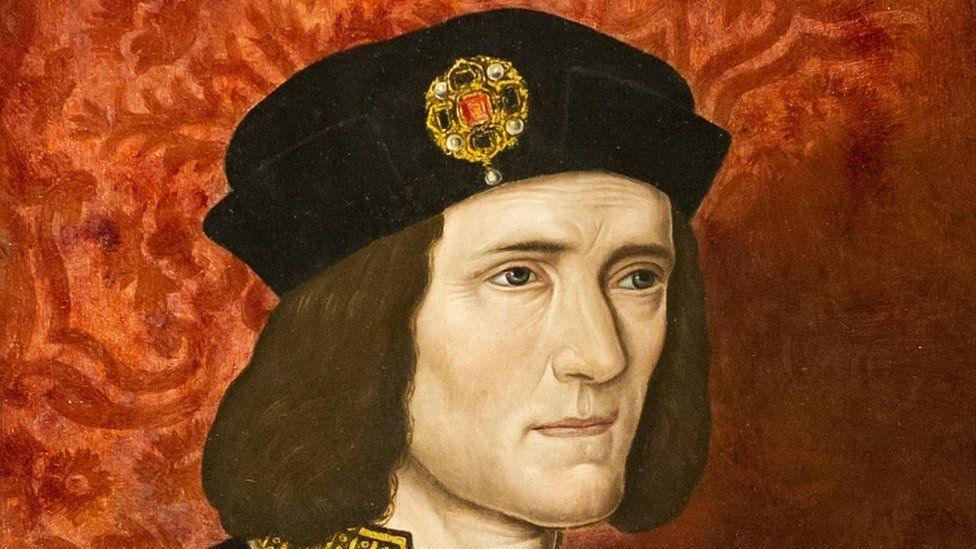
- Published7 March 2023
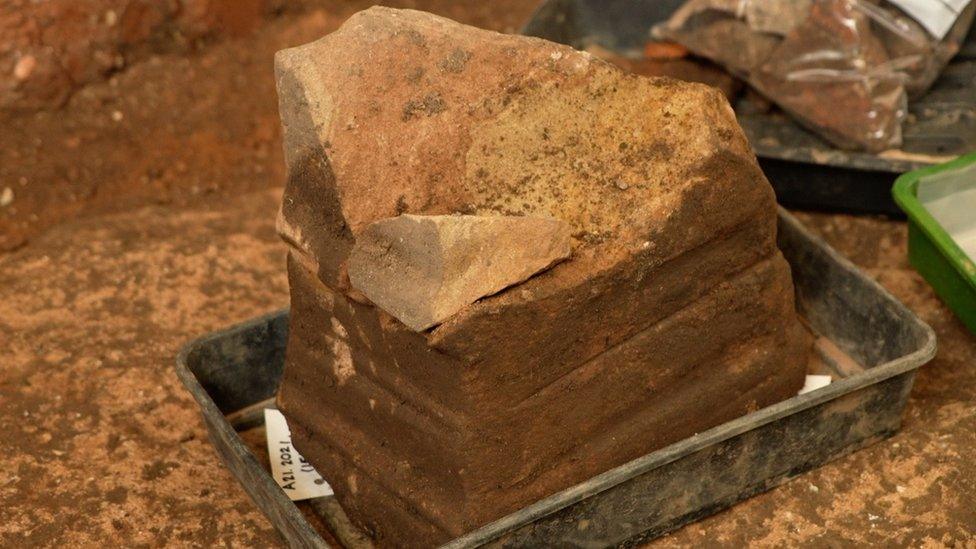
- Published25 August 2022
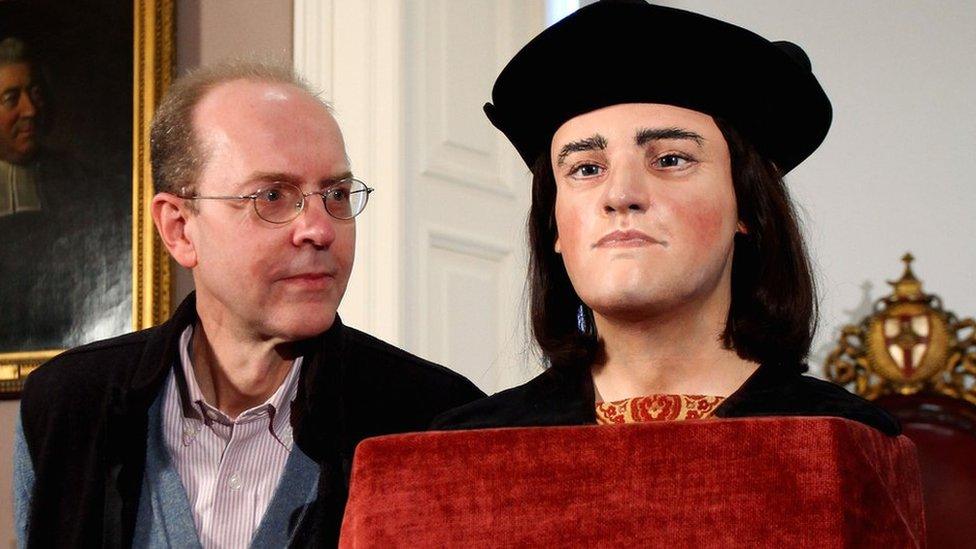
- Published27 March 2015
- Published26 March 2015